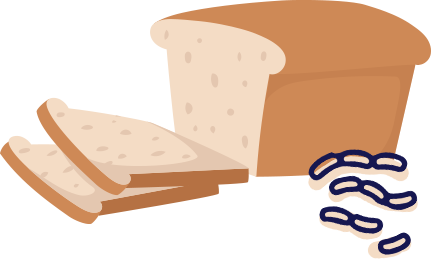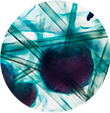Bread and cereals:
microbial attack
Most people have bread or cereals for breakfast - cornflakes with milk, porridge or a sandwich. Although these foods have a relatively long expiry date, our favorite bagel can be a victim of various microbes that can cause spoilage.




Have you ever wondered why a few days old bread has green spots? Can such bread be consumed without any harmful effects?
These green troublemakers are called molds, special microfungi that grow on moist foods. The most commonly accumulated molds on bread and cereals belong to the genera , , and .
They can be harmful to our health and it is important not to smell them and not to eat contaminated bread as this can lead to illness.
If the bread is enclosed in a bread container or plastic bag, the mold will develop due to the evaporation of water from the bread, because of which the environment becomes moist and favors mold growth and development. Bacteria may rarely appear, most commonly from the genus , however, since bread is baked at high temperatures, there is little chance that these microbes could survive.
Microorganisms most commonly appear when cooling, packaging or handling the finished product.

Rhizopus and Mucor
The two most common molds found in bread are from the genera:Rhizopus and Mucor. They can be recognized by their large fluffy white colonies that cover the entire surface of the bread, and sometimes develop greenish patches of indistinct shapes. These molds can often have an unpleasant smell.

Bacillus
Bacteria of the genus Bacillus can develop spores - a form of bacteria that helps it to survive in adverse conditions, therefore, the bacteria survive the bread baking process at high temperatures and, after bread cooling, they develop and attack the food.

Serratia marcescens
In very rare situations, bread can be the victim of a bacteria Serratia marcescens which causes the appearance of red blood-like droplets on bread, therefore such bread is called "bloody bread".

Did you know?
To prevent the development of bacteria and mold, it is recommended to keep cereals and bread in a clean place with as little natural light as possible. The key to prevent the mold is to identify the moisture and keep these foods in a dry place. Freezing bread after baking is also recommended as one way to prevent the appearance of microorganisms.

Proper handling and storage can extend the expiry date of these foods.














